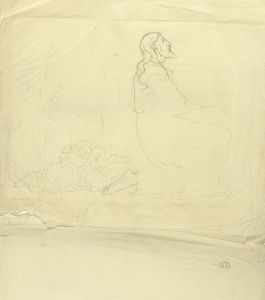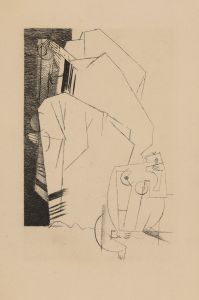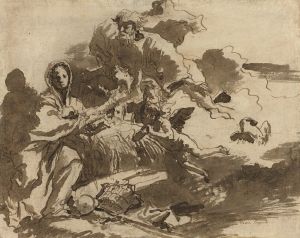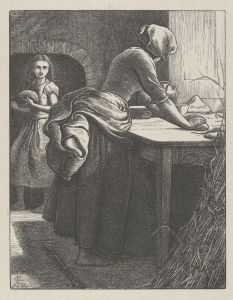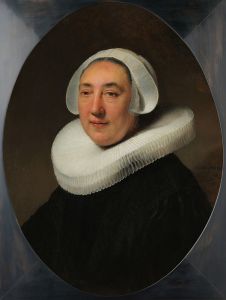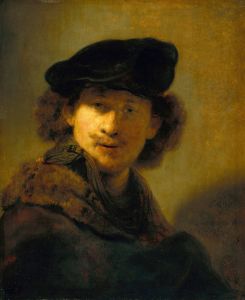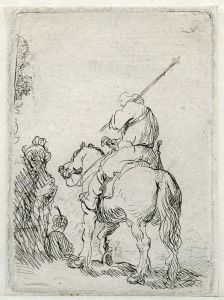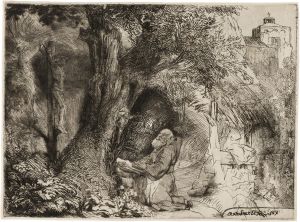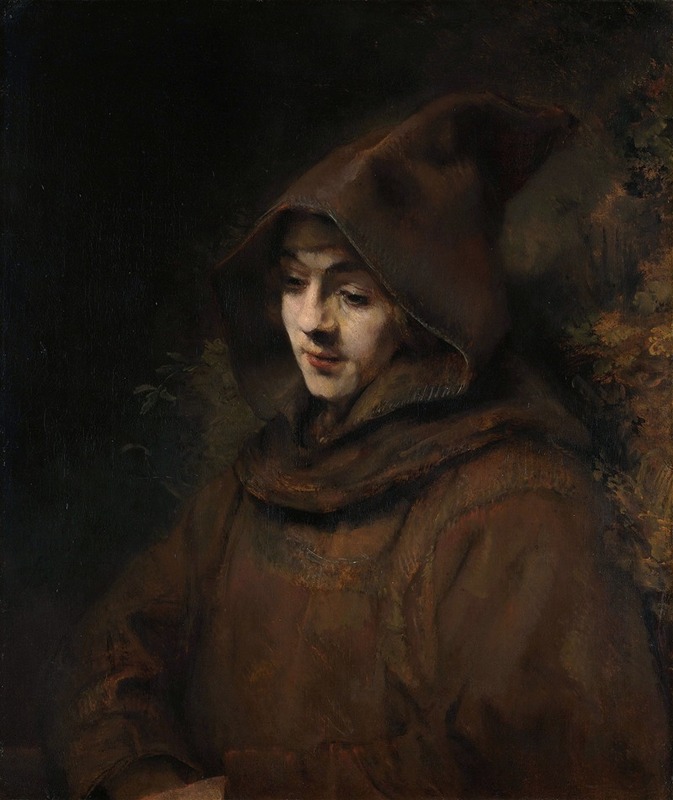
Titus in a Monk’s Habit
A hand-painted replica of Rembrandt van Rijn’s masterpiece Titus in a Monk’s Habit, meticulously crafted by professional artists to capture the true essence of the original. Each piece is created with museum-quality canvas and rare mineral pigments, carefully painted by experienced artists with delicate brushstrokes and rich, layered colors to perfectly recreate the texture of the original artwork. Unlike machine-printed reproductions, this hand-painted version brings the painting to life, infused with the artist’s emotions and skill in every stroke. Whether for personal collection or home decoration, it instantly elevates the artistic atmosphere of any space.
"Titus in a Monk’s Habit" is a painting by the renowned Dutch artist Rembrandt van Rijn, created in 1660. This artwork is a portrait of Rembrandt's son, Titus van Rijn, depicted in the guise of a monk. The painting is notable for its intimate portrayal and the use of light and shadow, which are characteristic of Rembrandt's mature style.
Rembrandt Harmenszoon van Rijn, born in 1606 in Leiden, is one of the most celebrated painters in European art history, known for his innovative use of light and shadow, as well as his profound ability to capture human emotion. By the time he painted "Titus in a Monk’s Habit," Rembrandt had already established himself as a master portraitist and was living in Amsterdam.
Titus van Rijn, born in 1641, was the fourth child of Rembrandt and his wife Saskia van Uylenburgh. He was the only one of their children to survive into adulthood. Titus was a frequent subject in Rembrandt's works, often depicted in various roles and costumes, which was a common practice for artists of the time to explore different themes and expressions.
In "Titus in a Monk’s Habit," Rembrandt portrays his son wearing a simple, dark robe that resembles a monk's habit. The choice of attire is significant, as it reflects the contemplative and introspective mood of the painting. The background is dark and undefined, which serves to highlight Titus's face and the subtle play of light across his features. This technique, known as chiaroscuro, is a hallmark of Rembrandt's work and contributes to the painting's emotional depth.
The painting is executed with Rembrandt's typical attention to detail and texture. The brushwork is loose yet controlled, allowing for a realistic depiction of the fabric and the soft, youthful features of Titus's face. The light falls gently on Titus, illuminating his thoughtful expression and creating a sense of inner reflection.
"Titus in a Monk’s Habit" is housed in the Rijksmuseum in Amsterdam, which holds one of the most comprehensive collections of Rembrandt's works. The painting is considered an excellent example of Rembrandt's ability to convey psychological depth and his mastery of portraiture.
Throughout his career, Rembrandt faced personal and financial difficulties, and his later years were marked by bankruptcy and the loss of many close family members, including Titus, who died in 1668. Despite these hardships, Rembrandt continued to produce works of profound beauty and insight, with "Titus in a Monk’s Habit" standing as a testament to his enduring skill and emotional sensitivity.
The painting remains a subject of admiration and study, offering insight into Rembrandt's personal life and his artistic evolution. It captures a moment of quiet introspection, both in the life of the artist and his son, and continues to resonate with viewers for its timeless portrayal of human emotion.






